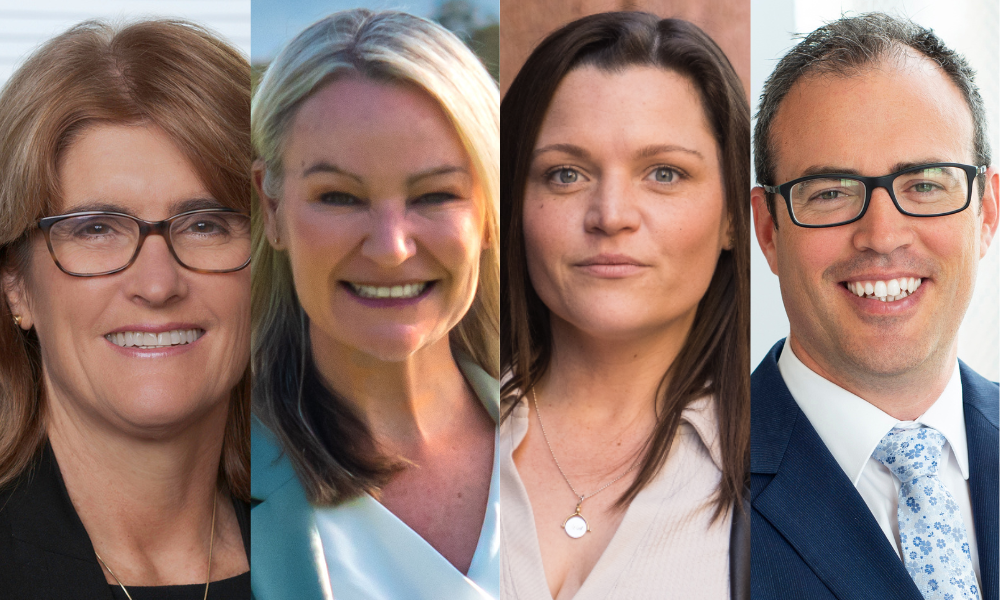Mortgage industry rattled by decision

Australia’s official cash rate has been lifted to 4.35%, an increase of 25 basis points, following the Reserve Bank’s board meeting today.
Many experts in the mortgage and finance industry had predicted the cash rate would jump.
On Tuesday afternoon, RBA governor Michele Bullock (pictured above left), who chose to pause the interest rate at her first board meeting last month, elected to increase the cash rate this month.
“Inflation in Australia has passed its peak but is still too high and is proving more persistent than expected a few months ago,” Bullock said.
“The latest reading on CPI inflation indicates that while goods price inflation has eased further, the prices of many services are continuing to rise briskly.
“While the central forecast is for CPI inflation to continue to decline, progress looks to be slower than earlier expected.”
According to Bullock, who became governor on September 18, the RBA board decided to increase the OCR and the interest rate paid on exchange settlement balances to 4.35%.
Rise spells more hardship for borrowers
Finance broker Kimberly Linder from Xcel Finance (pictured above second from left) said because of the RBA’s decision, many devastated homeowners would struggle to figure out how they would continue to pay their mortgage and cope with the cost of living crisis.
“This 13th nail in the coffin will push the percentage of stressed mortgages into a frightening 30.4% according to Roy Morgan,” Linder said.
“Belt tightening and stringent budgeting will continue to be the norm while Australians do all they can to get through these challenging times to simply hold onto their houses and pay their bills.
“The real struggle is that increased interest rates are not likely to have any impact on the largest inflation drivers being fuel, electricity and rents.”
According to Linder, many economists believe further rate rises will not dampen inflation.
Linder said she believed it would be the last rise for the year and the RBA would adopt a "wait and see policy" and allow the impact of the last 17 months of rate rises to flow thorough.
“From a lending perspective, we are seeing less and less people on incomes less than $100k being able to service to get into a home. This is devastating as our average wage in Australia is $95,576.
“As renting plus saving for a deposit is near impossible and confidence is at an all-time low, many individuals are believing that homeownership is simply out of reach for them.”
Linder said there should be a review of the interest stress rate so that it was reduced to “a more reasonable buffer of 1% to enable capacity to purchase”.
“We have seen credit policy soften with lower buffers to enable refinancing and to enable investment, however stress rates for owner occupiers remain unchanged and they are the percentage of the population that we need to be assisting the most.
“If your average Australian wage cannot service a home loan, do we continue to see home ownership percentages drop? And the next can of worms, what does this do for our national housing shortage?”
Rate rises forcing borrowers to search for better rates
Mozo money expert Rachel Wastell (pictured above second from right) warned interest rates could be deceptive with many borrowers wondering how they would be impacted by the RBA taking the cash rate to its highest level in over a decade despite last month’s rate pause.
“Less than 1% difference on a home loan rate can add up to tens of thousands of dollars when you’re looking at 15-year loan terms,” Wastell said.
“So, if you’re struggling with rising mortgage repayments, the key is to check your current rate and compare this to what’s on offer in the market, to see if you can get a better rate.”
Rate had to drop to get economy where it needs to be
Daniel Kiely, a senior research fellow with Bankwest Curtin Economics Centre (pictured above right), said the RBA’s decision to raise the cash rate was not surprising.
“Across Australia household inflation rose 1.2% in the quarter to September 2023. This compares to a quarterly rate of 0.8%in the June quarter, and in turn, shortened the odds of a Melbourne Cup Day cash rate hike.”
He said the RBA board had been resolute that returning inflation to within the 2-3% target within a reasonable timeframe remained its priority.
“The reversal in CPI quarter-on-quarter trend to September implies that the RBA board was always highly likely to seek reassurance on the trajectory of inflation towards the target rate. Increasing the cash rate goes some way towards that reassurance.”
Kiely said acting now made sense – economic growth was below trend, and it remained reasonably strong, unemployment rates remained low, and the labour market was strong.
“Monetary policy takes time to take effect on the real economy, and as such, inflationary trends over the coming quarters will be interesting to see,” he said.
Kiely said he wouldn’t rule out further rate rises.
“CPI or household inflation, now sits at 5.4% nationally, down from the 7.8% cent peak of December 2022.
“This suggests that a combination of monetary tightening, fiscal policy and improvements in international supply chain pressures are having a positive impact. But inflation remains over target and sits above the 4.7% average reported by the major advanced economies (G7).”
Kiely said increased interest rates would bring a mixed response and assuming retail banks passed on the cash rate, mortgage holders, particularly those new to the market, would feel additional pain, with some pushed into housing stress.
“Those trying to get on the property ladder will see further impacts on borrowing capacity, with housing supply already making it a difficult property sector,” he said.
Do you think Australia’s unlikely to escape another cash rate rise this year? Share your thoughts below.



